Net-Zero Greenhouse Gas Emission Electrified Aircraft Propulsion for Large Commercial Transport
Abstract
:1. Introduction
2. Types of Emissions from Large Commercial Transport
3. GHG Reduction Effort Category 1—Conventionally Known EAP
3.1. Technologies in CK-EAP for Large Commercial Transport
3.2. GHG Reduction Potential of CK-EAP for Large Commercial Transport
4. GHG Reduction Effort Category 2—Green Fuel Combustion and Its Associated Electrification
4.1. SAF Combustion
4.2. Green Hydrogen Combustion
4.3. Necessity of Electrification in Green Fuel Production
4.4. Green Fuel Combustion Enhanced by CK-EAP
5. GHG Reduction Efforts—Emerging Net-Zero-GHG Propulsion-Based EAP
5.1. Supercritical CO2-Based Closed-Brayton-Cycle Engine Technology
5.2. Closed-Strayton-Cycle Engine Technology
5.3. True Net-Zero GHG Propulsion-Based EAP
6. Conclusions
Author Contributions
Funding
Acknowledgments
Conflicts of Interest
References
- The Paris Agreement. United Nations, November 2016. Available online: https://unfccc.int/process-and-meetings/the-paris-agreement (accessed on 10 May 2023).
- United States 2021 Aviation Climate Action Plan. Available online: https://www.faa.gov/sites/faa.gov/files/2021-11/Aviation_Climate_Action_Plan.pdf (accessed on 21 June 2023).
- Lee, D.S.; Fahey, D.W.; Skowron, A.; Allen, M.R.; Burkhardt, U.; Chen, Q.; Doherty, S.J.; Freeman, S.; Forster, P.M.; Fuglestvedt, J.; et al. The contribution of global aviation to anthropogenic climate forcing for 2000 to 2018. Elsevier Atmos. Environ. 2021, 244, 117834. [Google Scholar] [CrossRef] [PubMed]
- Timperley, J. The challenge of tackling aviation’s non-CO2 emissions. Carbon Brief 2017, 15, 17. [Google Scholar]
- Haran, K.; Madavan, N.; O’Connell, T.C. Electrified Aircraft Propulsion, Powering the Future of Air Transportation; Cambridge University Press: Cambridge, UK, 2022. [Google Scholar]
- Hoogreef, M.; Vos, R.; de Vries, R.; Veldhuis, L.L. Conceptual Assessment of Hybrid Electric Aircraft with Distributed Propulsion and Boosted Turbofans. In Proceedings of the AIAA SciTech 2019 Forum, San Diego, CA, USA, 7–11 January 2019. [Google Scholar]
- GE Aviation and Safran Launch Advanced Technology Demonstration Program for Sustainable Engines; Extend CFM Partnership to 2050. Available online: https://www.geaerospace.com/press-release/other-news-information/ge-aviation-and-safran-launch-advanced-technology (accessed on 1 July 2023).
- Kim, H.D.; Brown, G.V.; Felder, J.L. Distributed Turboelectric Propulsion for Hybrid Wing Body Aircraft. In Proceedings of the 9th International Powered Lift Conference, London, UK, 22–24 July 2008. [Google Scholar]
- Perullo, C.; Alahmad, A.; Wen, J.; D’Arpino, M.; Canova, M.; Mavris, D.N.; Benzakein, M. Sizing and Performance Analysis of a Turbo-Hybrid-Electric Regional Jet for the NASA ULI Program. In Proceedings of the AIAA Propulsion and Energy 2019 Forum, Indianapolis, IN, USA, 19–22 August 2019. [Google Scholar]
- Taylor, N. Cell Energy Density Roadmap. Battery Design, 6 January 2022. Available online: https://www.batterydesign.net/cell-energy-density-roadmaps/ (accessed on 24 July 2024).
- Machín, A.; Morant, C.; Márquez, F. Advancements and Challenges in Solid-State Battery Technology: An In-Depth Review of Solid Electrolytes, and Anode Innovations. Batteries 2024, 10, 29. [Google Scholar] [CrossRef]
- Hettesheimer, T.; Neef, C.; Inclán, I.R.; Link, S.; Schmaltz, T.; Schuckert, F.; Stephan, A.; Stephan, M.; Thielmann, A.; Weymann, L.; et al. Lithium-Ion Battery Roadmap—Industrialization Perspectives Toward 2030. Fraunhofer Inst. Syst. Innov. Res. December 2023. Available online: https://publica.fraunhofer.de/entities/publication/fc576f43-5e5f-466e-9ea1-e0f2d9e742c9/details (accessed on 24 July 2024). [CrossRef]
- Schmaltz, T.; Wicke, T.; Weymann, L.; Voß, P.; Neef, C.; Thielmann, A. Solid-State Battery Roadmap 2035+. Fraunhofer Institute for Systems and Innovation Research ISI, Karlsruhe, April 2022. Available online: https://publica.fraunhofer.de/entities/publication/7be4b3d3-2844-42d9-b900-a19e1ee1ddea/details (accessed on 24 July 2024). [CrossRef]
- Thomson, R.; Sachdeva, N.; Healy, A.; Bail, N.; Sterm, C. Sustainable Aviation Fuels, Roland Berger Report, London, Great Britain, July 2020. Available online: https://www.rolandberger.com/publications/publication_pdf/roland_berger_sustainable_aviation_fuels.pdf (accessed on 24 July 2024).
- Sustainable Aviation Fuel, Energy Efficiency & Renewable Energy, Department of Energy. Available online: https://afdc.energy.gov/fuels/sustainable-aviation-fuel (accessed on 20 June 2024).
- SpringerLink—Advance in Pathways to Sustainable Aviation Fuels. Available online: https://link.springer.com/chapter/10.1007/978-3-031-06577-4_1 (accessed on 19 June 2024).
- AviTrader. Available online: https://avitrader.com/2023/12/12/ge-aerospace-and-partners-complete-testing-on-10th-engine-model-using-100-saf-since-2016/ (accessed on 19 May 2024).
- IATA. FACT SHEET 7: Liquid Hydrogen as a Potential Low-Carbon Fuel for Aviation; International Air Transport Association: Montreal, QC, Canada, 2019; Available online: https://www.iata.org/contentassets/d13875e9ed784f75bac90f000760e998/fact_sheet7-hydrogen-fact-sheet_072020.pdf (accessed on 24 July 2024).
- Hydrogen Takes Flight: Airbus and CFM International To Partner On Hydrogen-Fueled Demonstration by GE Reports. 23 February 2022. Available online: https://www.geaerospace.com/news/articles/product-sustainability-technology/hydrogen-takes-flight-airbus-and-cfm-international (accessed on 12 June 2022).
- Aircraft Fuel Prices at U.S. Airports & FBOs. Available online: https://www.globalair.com/airport/region.aspx (accessed on 24 July 2024).
- Wolff, C.; Rifer, D. Clean Skies for Tomorrow Sustainable Aviation Fuels as a Pathway to Net-Zero Aviation; World Economic Forum Insight Report; November 2020. Available online: https://www.weforum.org/publications/clean-skies-for-tomorrow-sustainable-aviation-fuels-as-a-pathway-to-net-zero-aviation/ (accessed on 14 June 2024).
- Holladay, J.; Abdullah, Z.; Heyne, J. Sustainable Aviation Fuels: Review of Technical Pathways, Office of Energy Efficiency & Renewable Energy, Department of Energy, 2020. Available online: https://www.energy.gov/sites/prod/files/2020/09/f78/beto-sust-aviation-fuel-sep-2020.pdf (accessed on 19 May 2024).
- Van Welie, G.D.; Marion, J.C.; Conlon, W.C. sCO2 Power Cycle Development and Commercialization. In Proceedings of the 6th International Supercritical CO2 Power Cycles Symposium, Pittsburgh, PA, USA, 27–29 March 2018. [Google Scholar]
- Khadse, A.; Blanchette, L.; Kapat, J.; Vasu, S.; Hossain, J.; Donazzolo, A. Optimization of Supercritical CO2 Brayton Cycle for Simple Cycle Gas Turbines Exhaust Heat Recovery Using Genetic Algorithm. Trans. ASME 2018, 140, 071601. [Google Scholar] [CrossRef]
- Wright, S.; Radel, R.; Vernon, M.; Rochau, G.; Pickard, P. Operation and analysis of a supercritical CO2 Brayton cycle, SAND2010-0171, 1 September 2010. Available online: https://www.osti.gov/biblio/984129/ (accessed on 24 July 2024). [CrossRef]
- Construction Underway on sCO2 Brayton Cycle Demo Plant. Available online: https://www.modernpowersystems.com/analysis/construction-underway-on-sco2-brayton-cycle-demo-plant-6920953/?cf-view (accessed on 6 June 2024).
- Dyson, R. True Zero Emission Electric Aircraft Propulsion Transport Technology. In Proceedings of the AIAA AVIATION 2023 Forum, San Diego, CA, USA, 12–16 June 2023. [Google Scholar]
- Wang, Z.; Turan, A.; Craft, T. Review of the State of the Art for Radial Rotating Heat Pipe Technology Potentially Applicable to Gas Turbine Cooling. Thermo 2023, 3, 127–147. [Google Scholar] [CrossRef]
- Chapman, J.; Simon, D.; McNichols, E. An Analysis of the Strayton Engine, a Brayton and Stirling Cycle Recuperating Engine. In Proceedings of the AIAA Propulsion and Energy Forum, Indianapolis, IN, USA, 19–22 August 2019. [Google Scholar]
- Armstrong, M.J.; Ross, C.A.H.; Blackwelder, M.J.; Rajashekara, K. Trade Studies for NASA N3-X Turboelectric Distributed Propulsion System Electrical Power System Architecture. SAE Int. J. Aerosp. 2012, 5, 325–336. [Google Scholar] [CrossRef]
- Kim, H.D.; Felder, J.L.; Tong, M.T.; Armstrong, M. Revolutionary Aeropropulsion Concept for Sustainable Aviation: Turboelectric Distributed Propulsion. In Proceedings of the 2013 International Society for Air Breathing Engines, Busan, Republic of Korea, 9–13 September 2013. [Google Scholar]
- Siddavatam, A.K.R.; Rajashekara, K.; Reddy, S.R.P.; Huang, H.; Krishnamoorthy, H.S.; Wang, F. A H-type architecture for electric/hybrid-electric aircraft propulsion systems. Institute of Engineering and Technology. IET Electr. Syst. Transp. 2023, 13, e12065. [Google Scholar] [CrossRef]
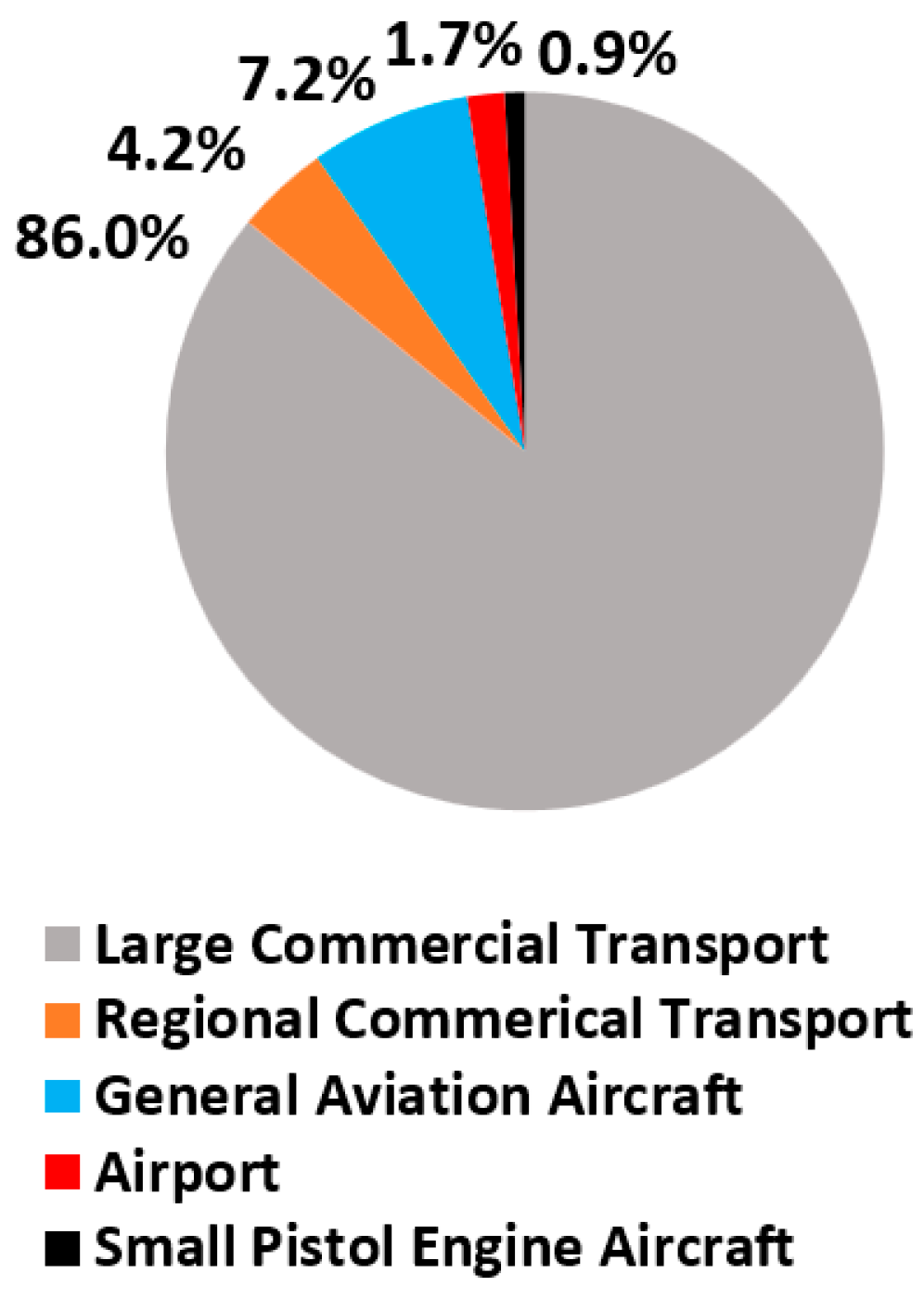

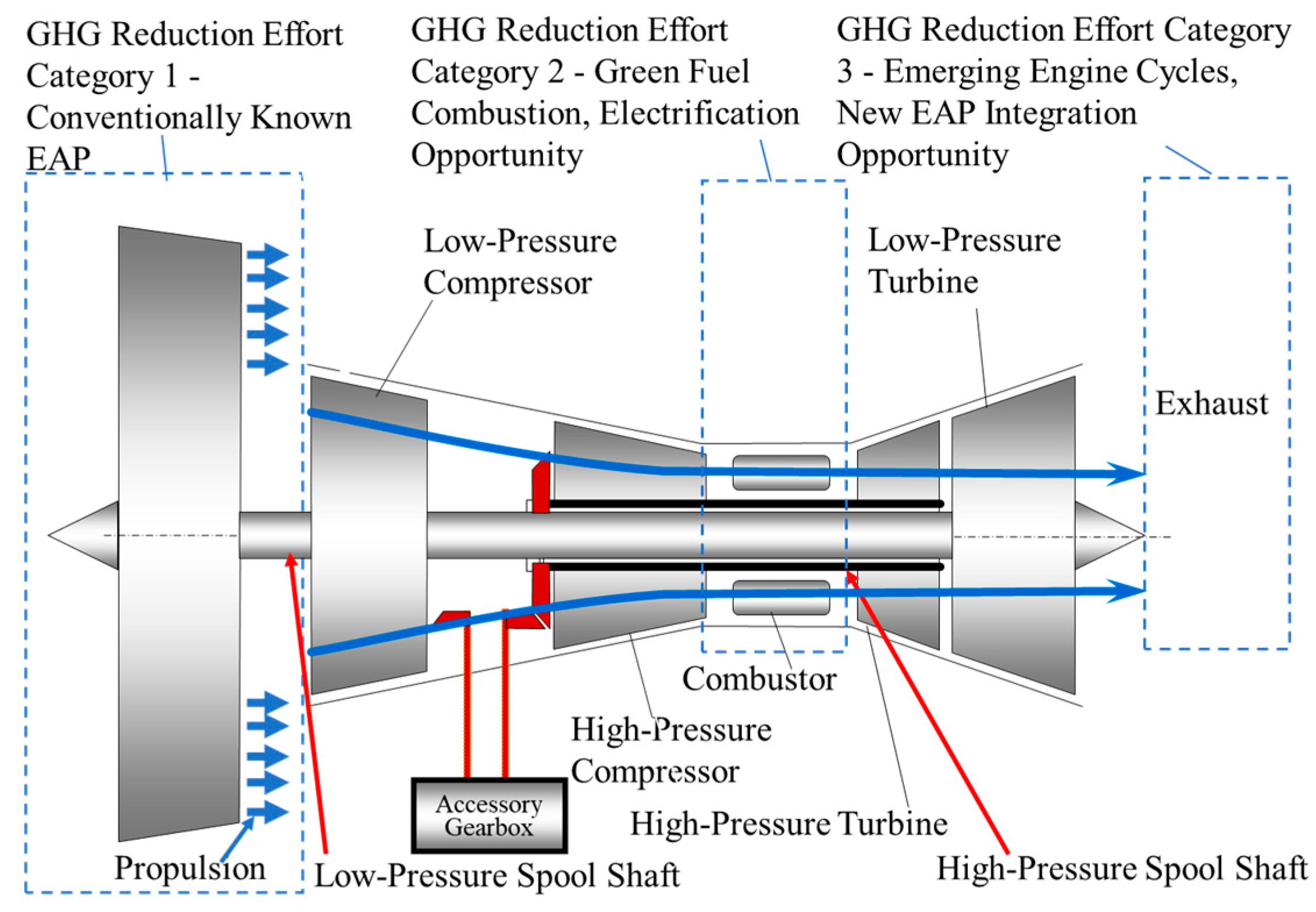
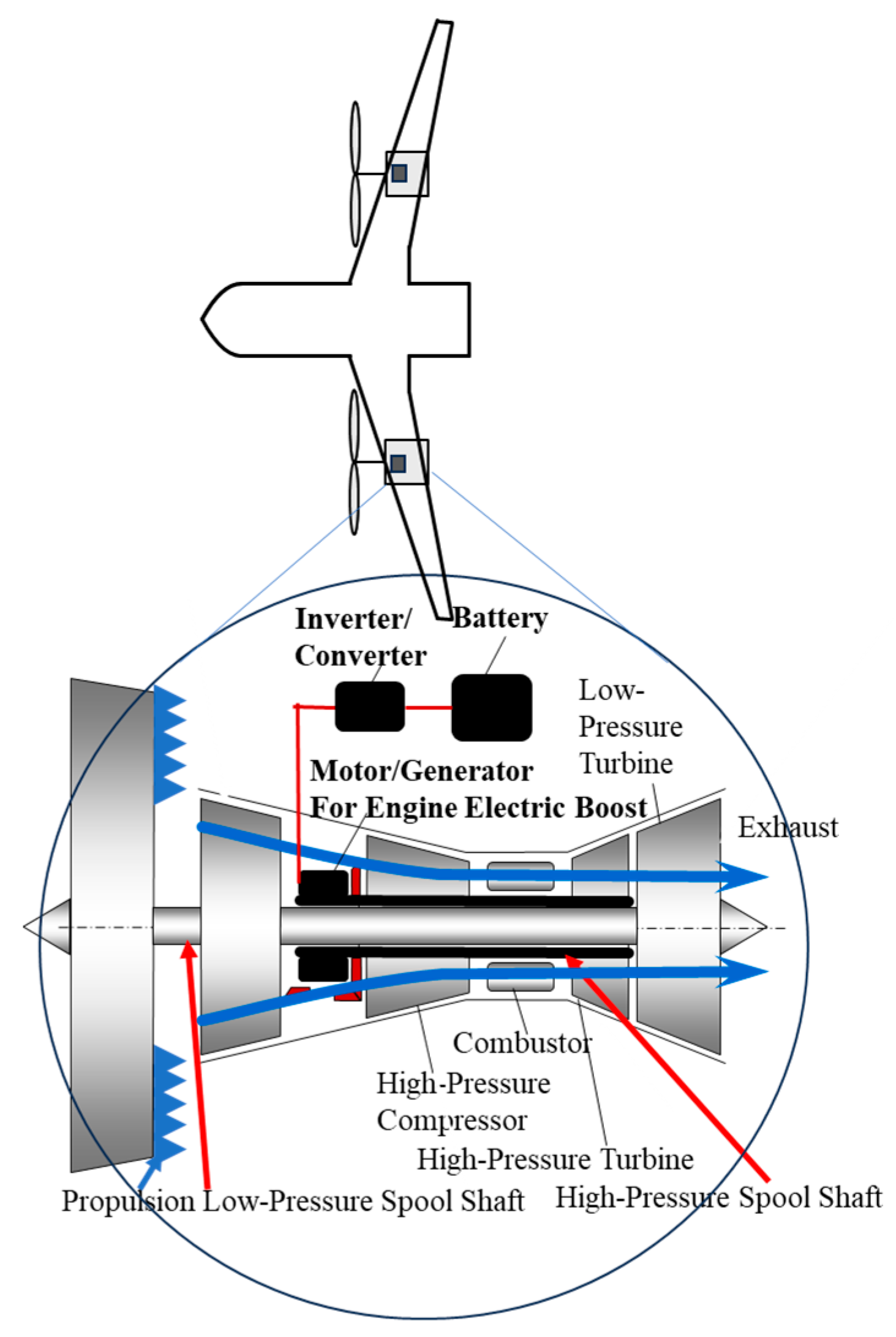
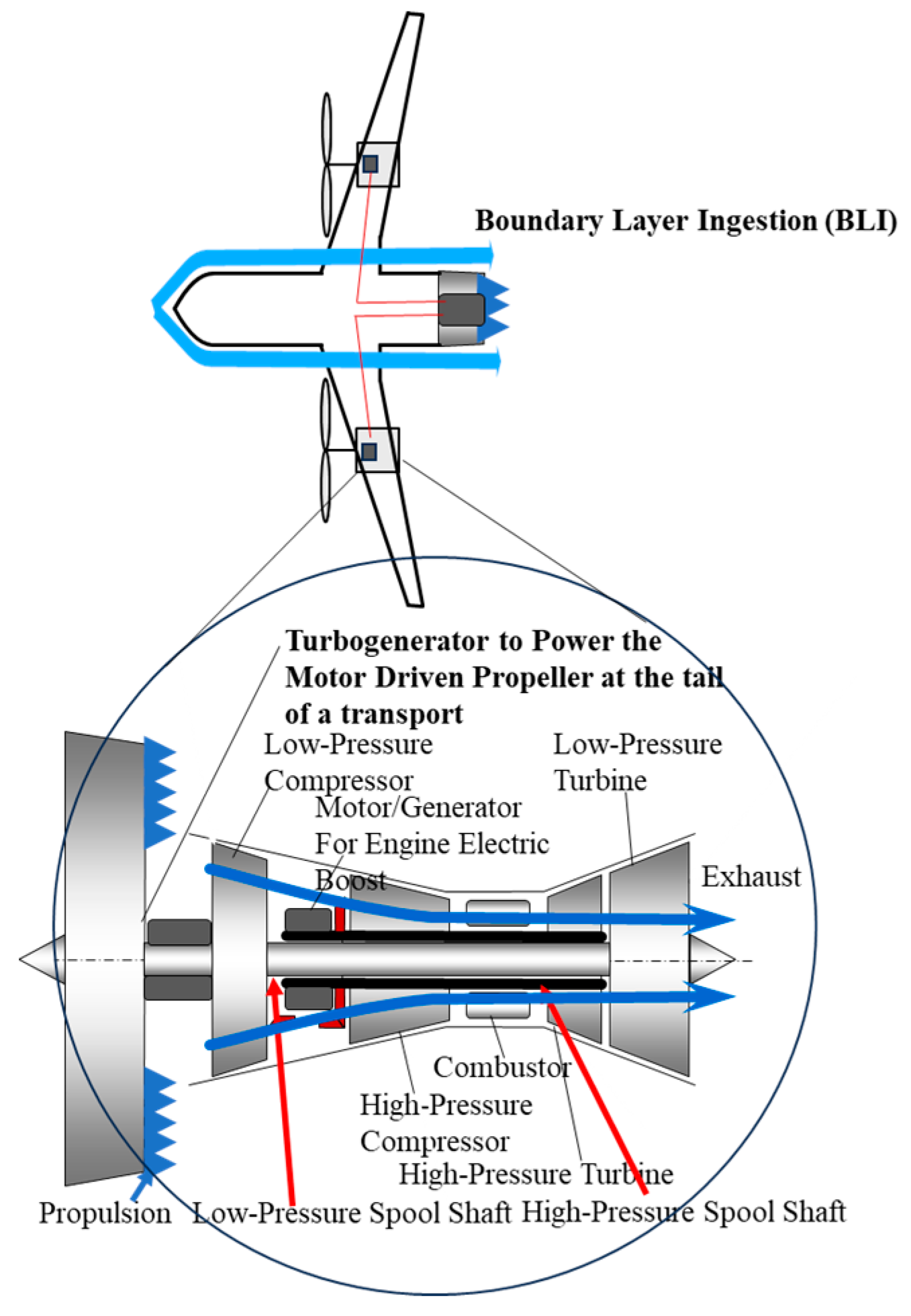
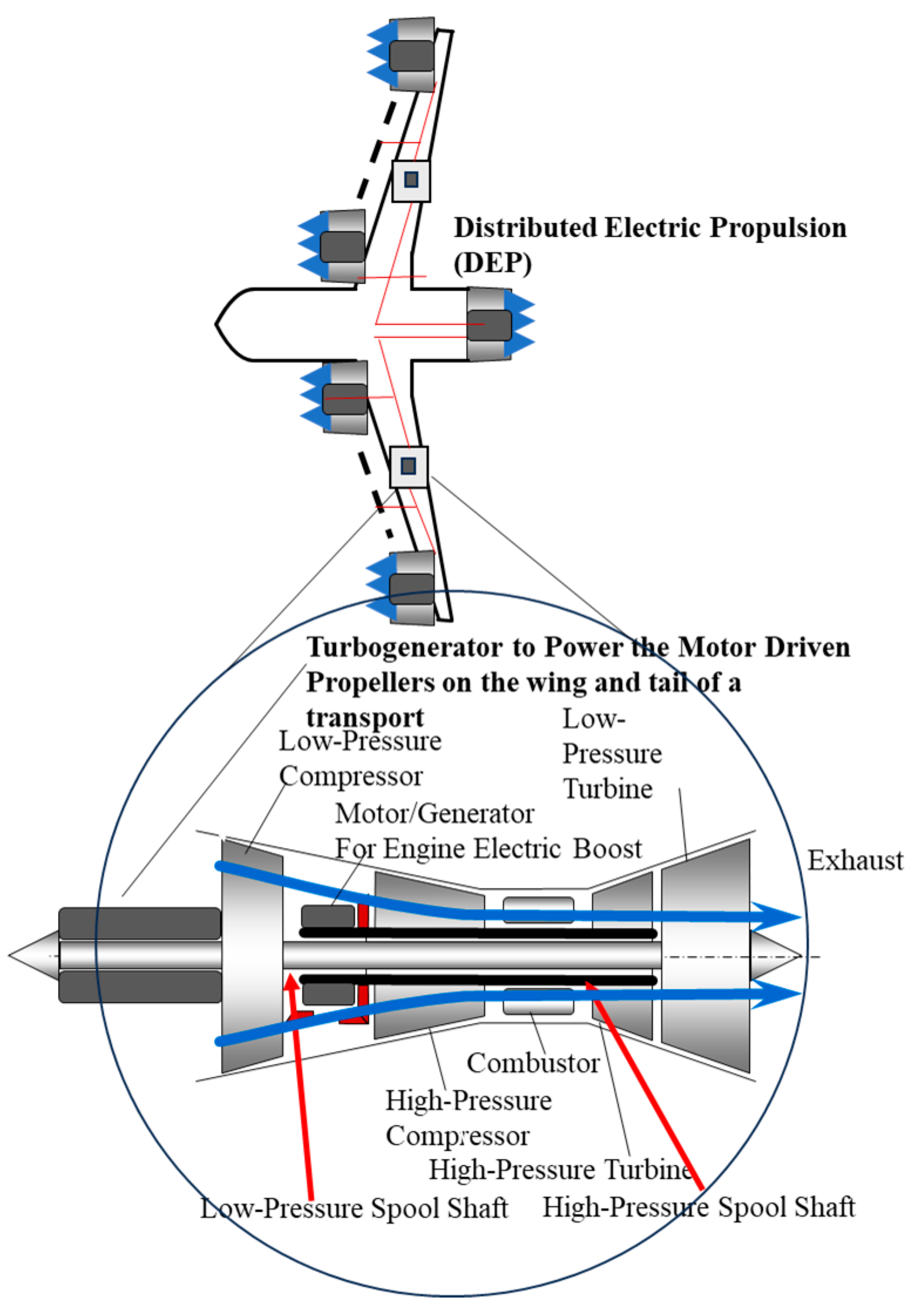
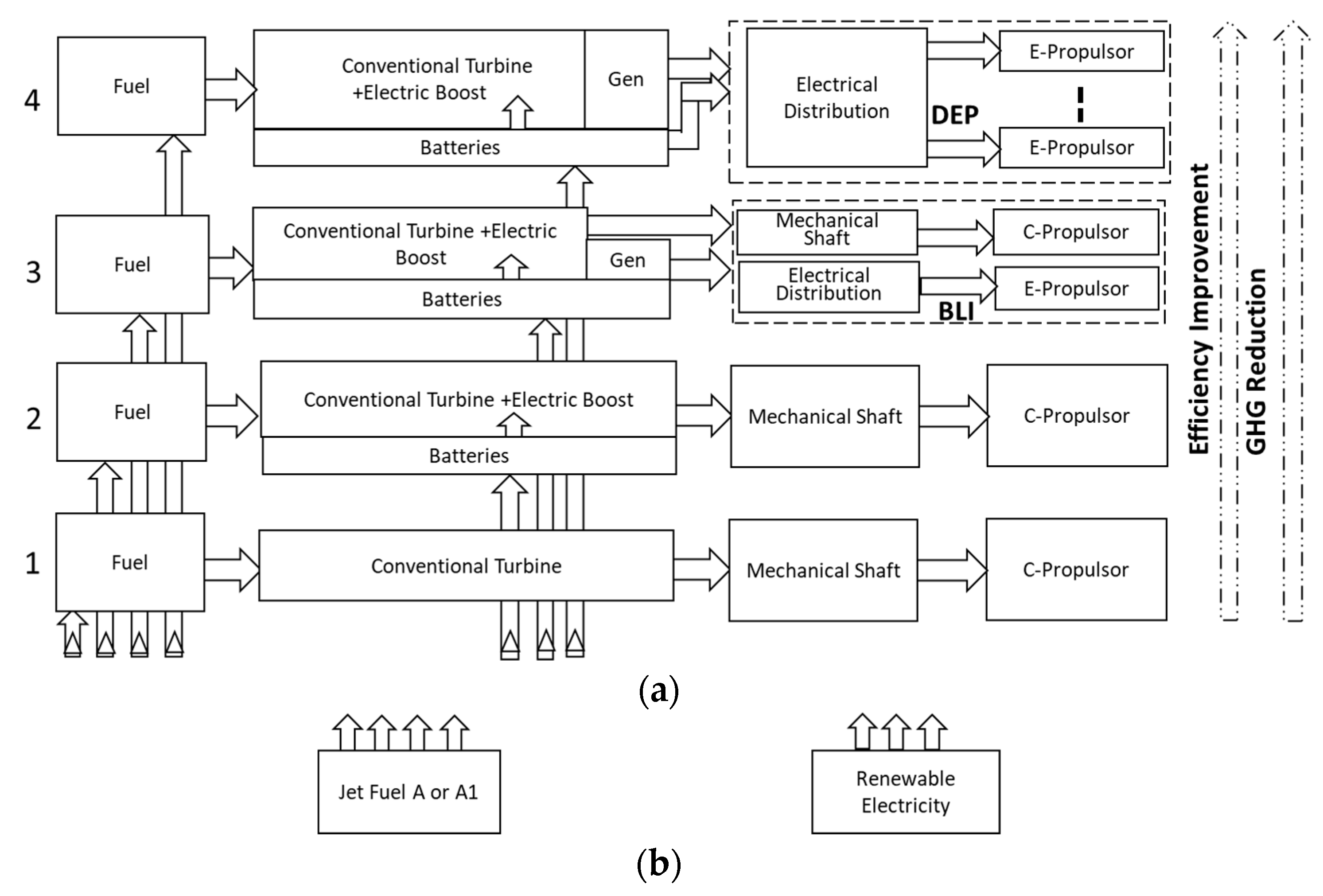
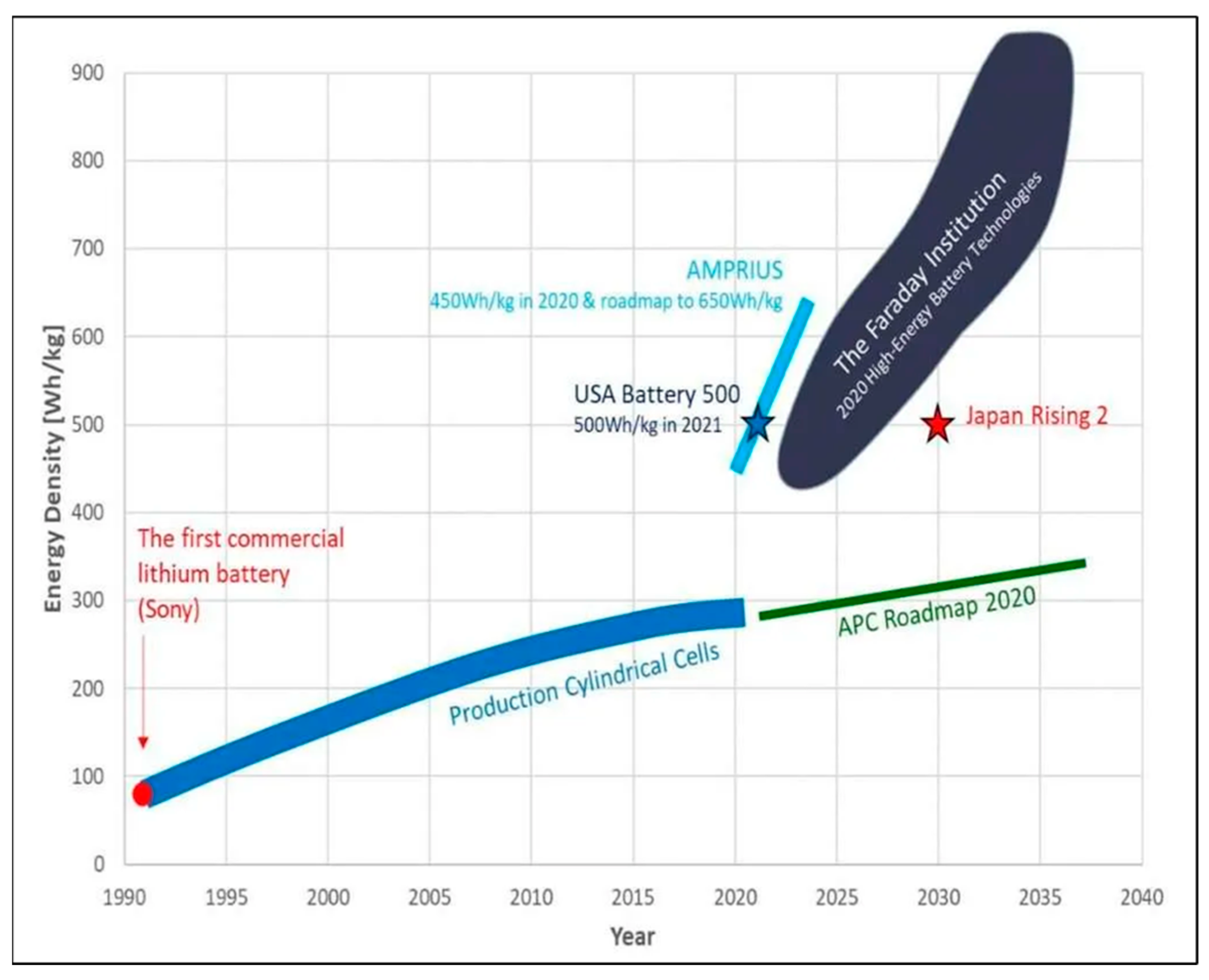
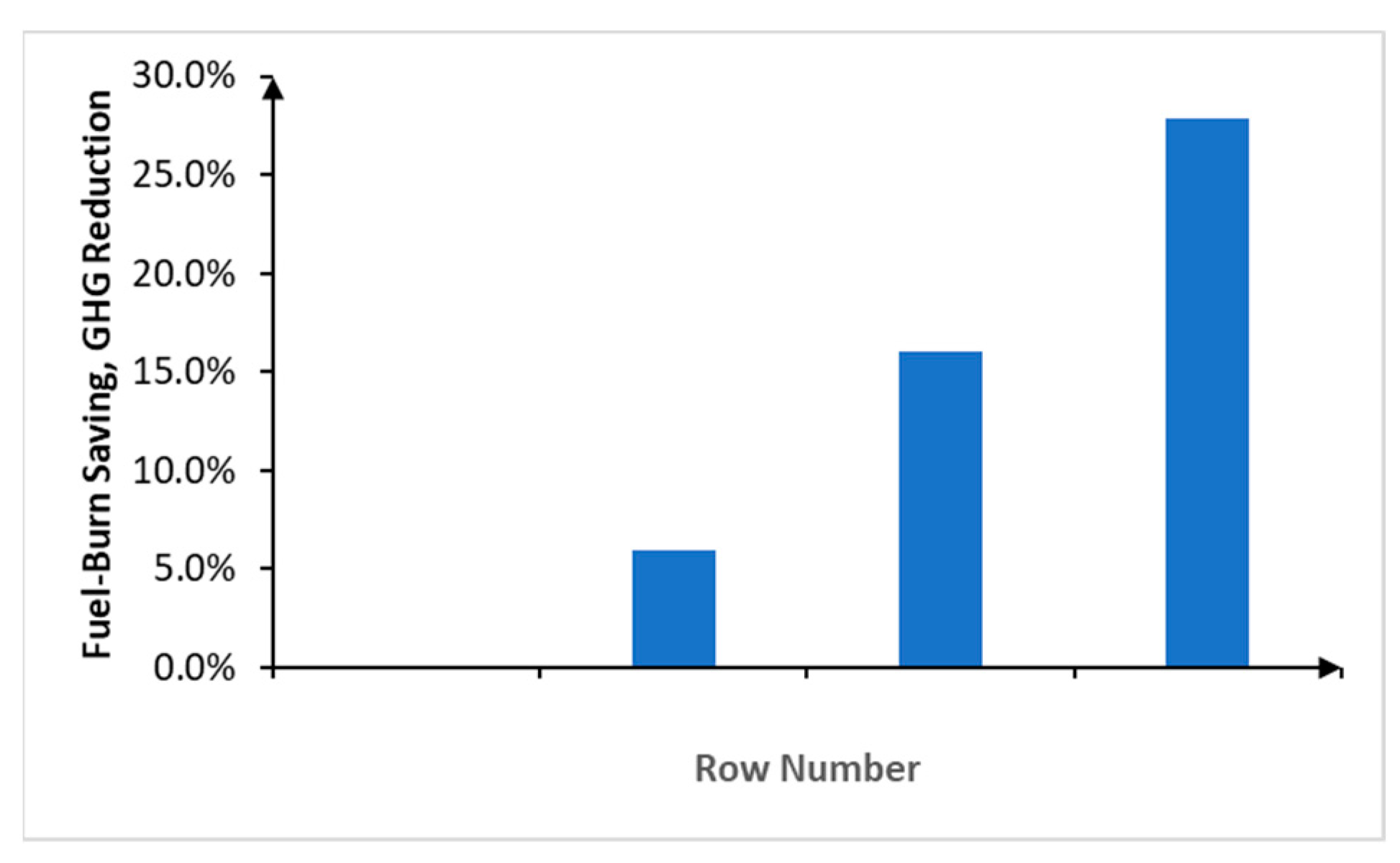

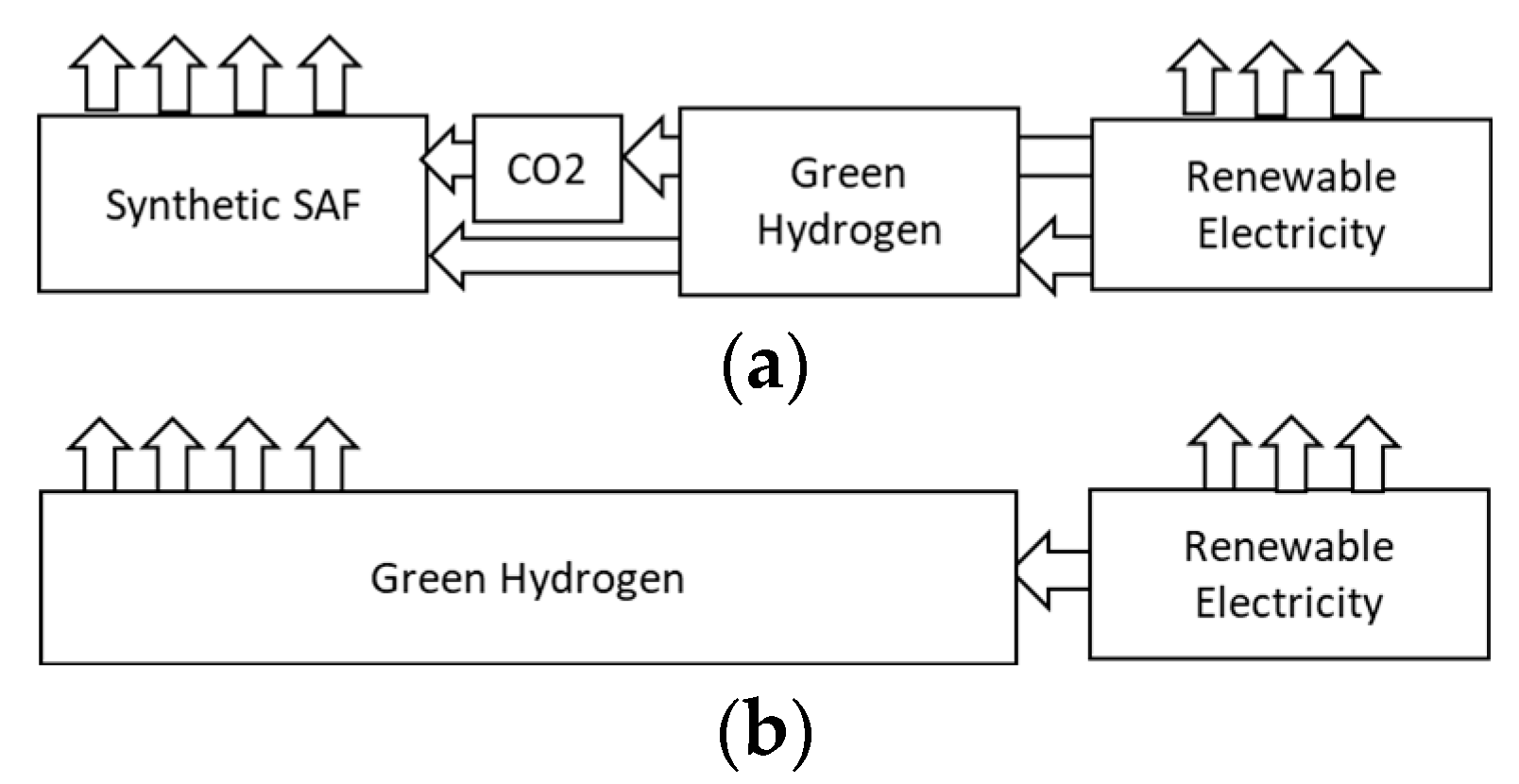
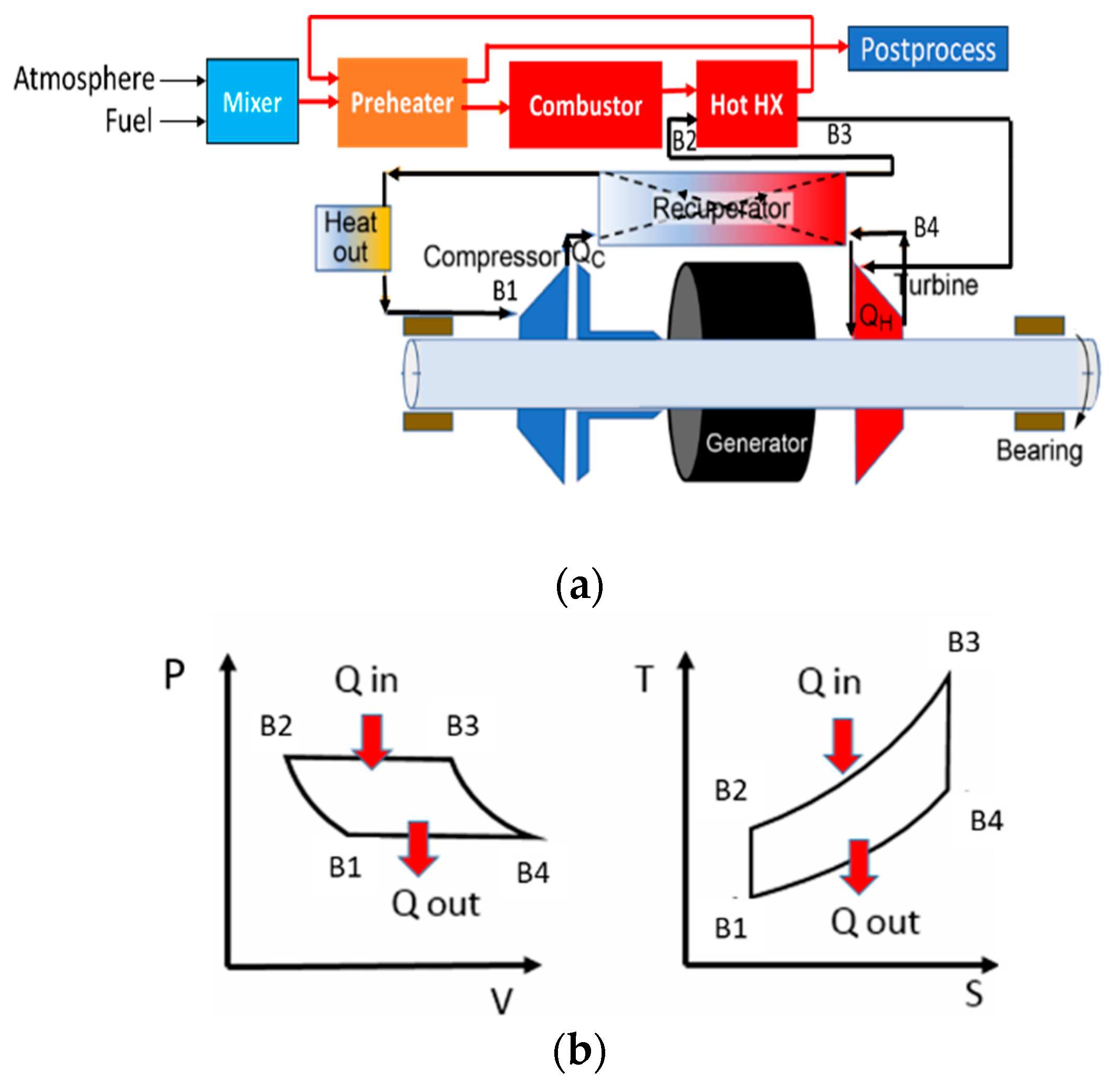
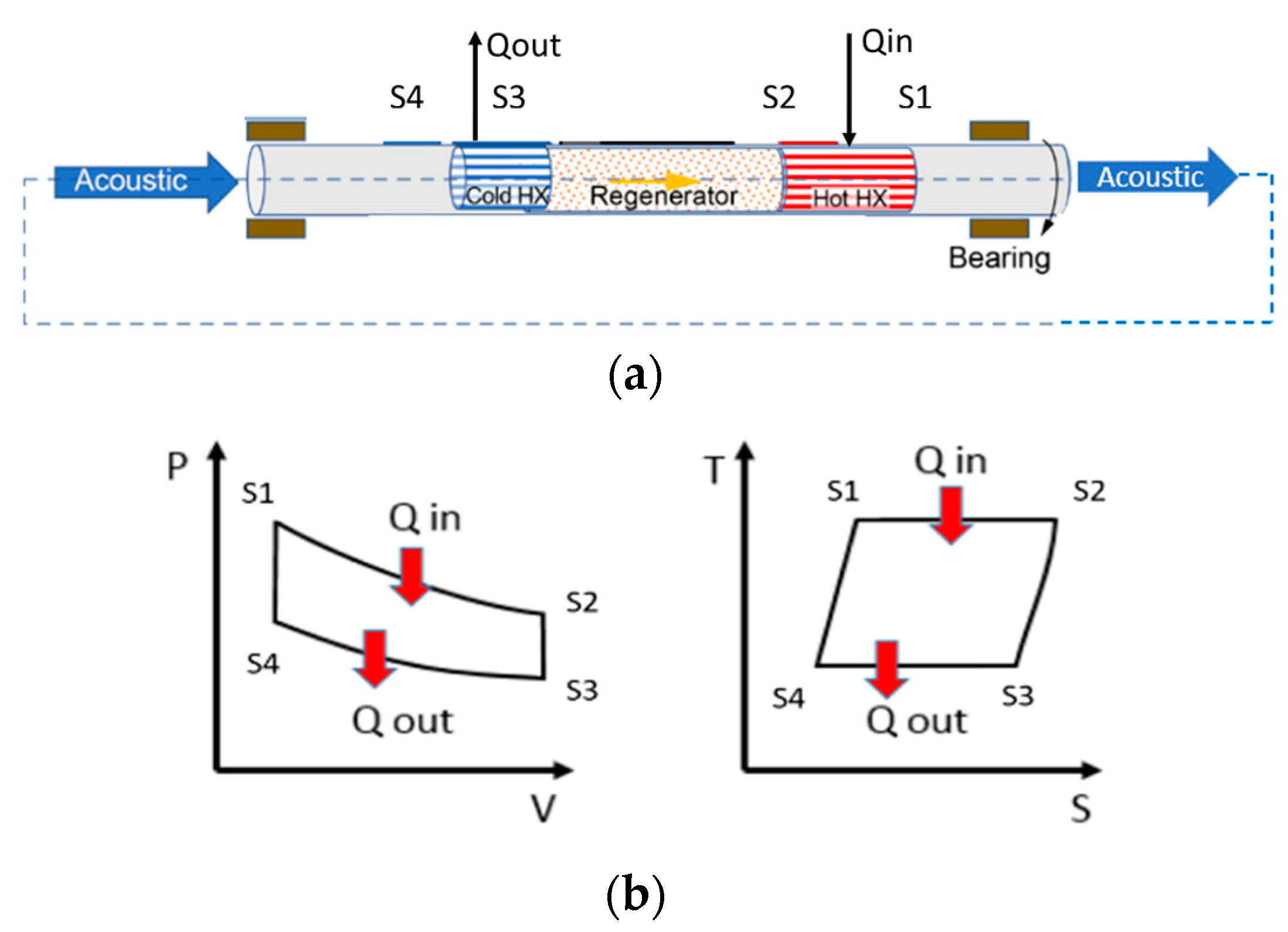

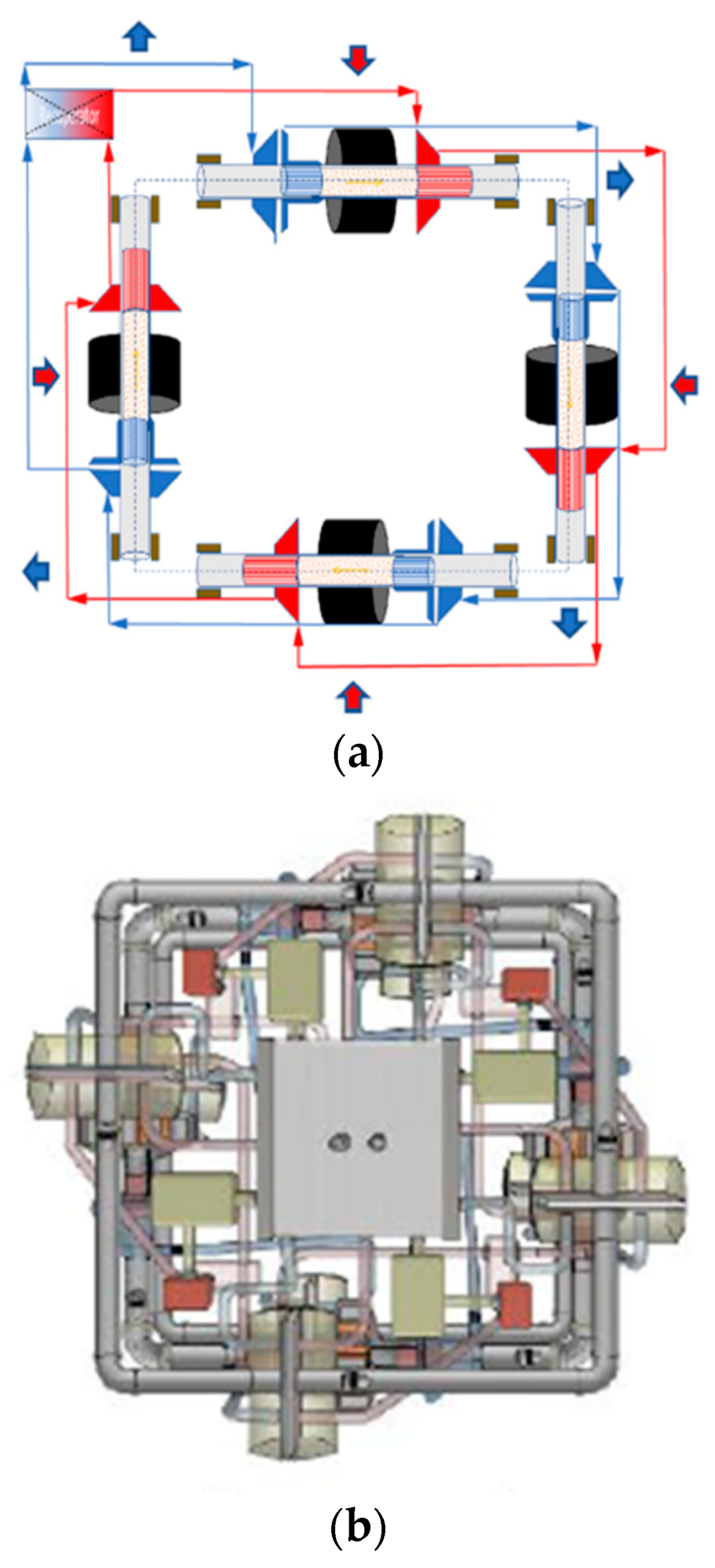

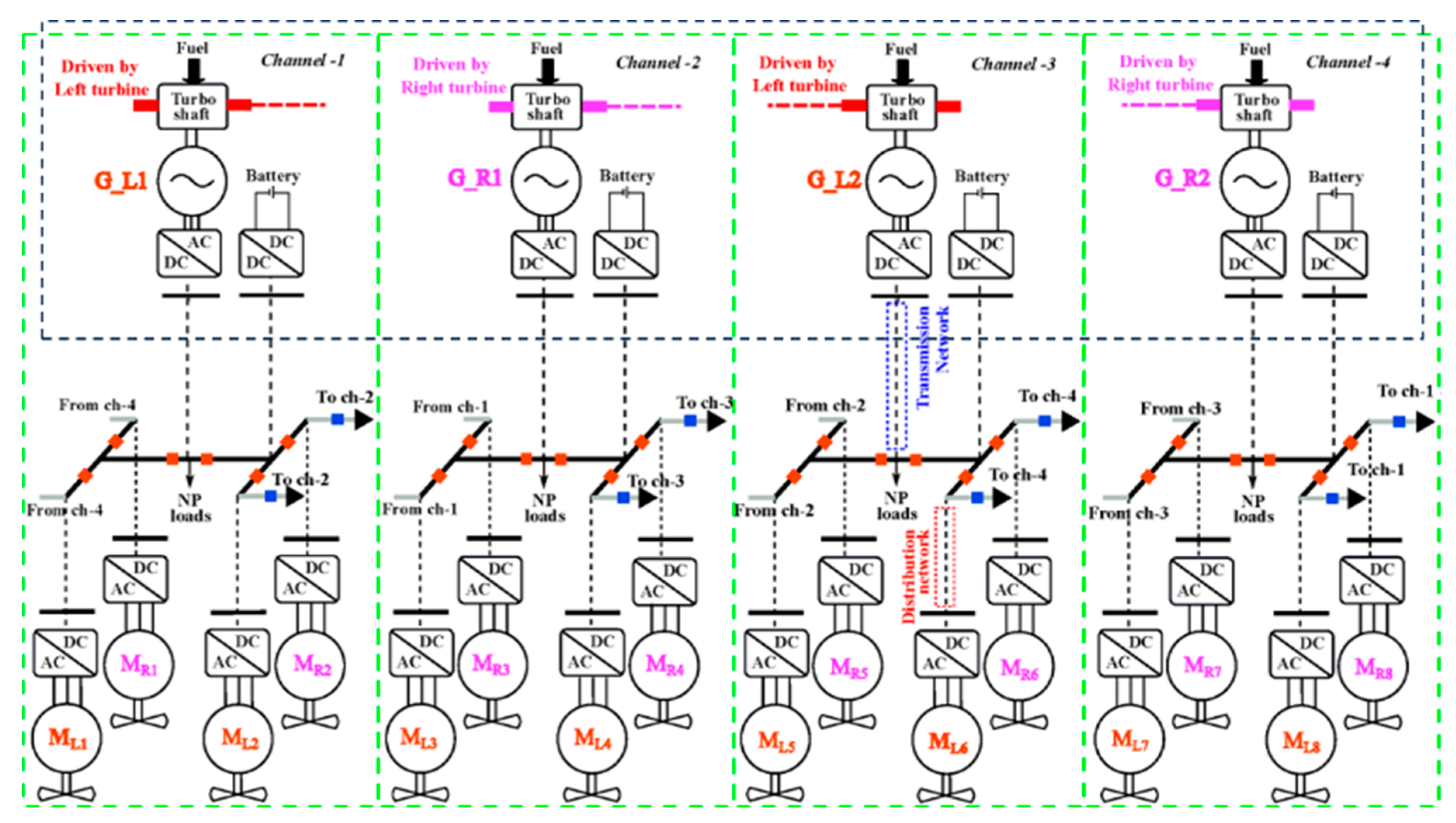
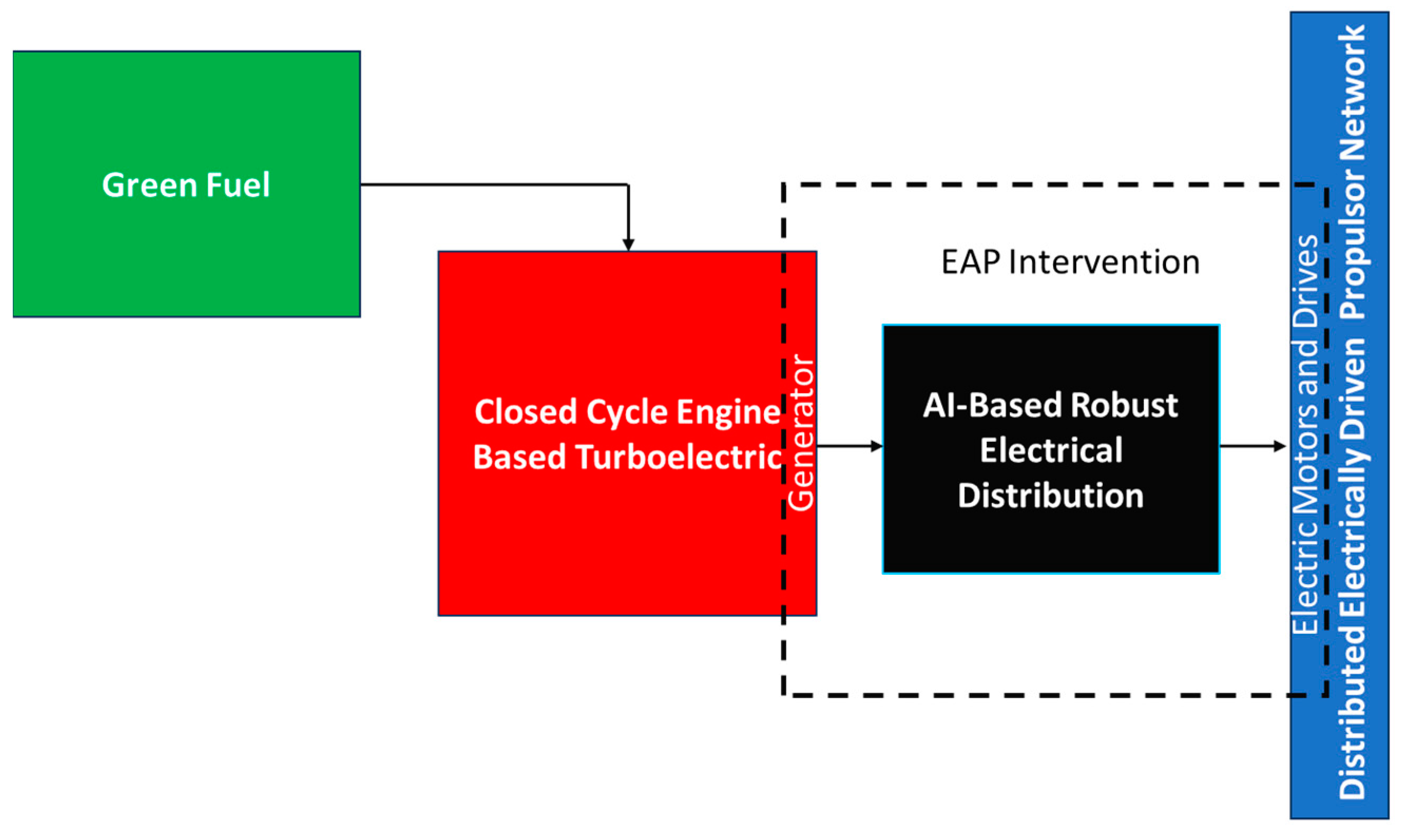
| GHG Reduction (%) | |
|---|---|
| CO2 | −27.9 |
| NOx | −27.9 |
| Contrails | −27.9 |
| Non-CO2 | −27.9 |
| Fuel Burn | −27.9 |
| Important Attribute | Substantial ongoing R&D |
| GHG Reduction (%) | ||||
|---|---|---|---|---|
| Synthetic SAF | Green Hydrogen | |||
| Without C1 | With C1 * | Without C1 | With C1 | |
| CO2 | −90 | −93 | −100 | −100 |
| NOx | −15 | −41 | −25 | −48 |
| Contrails | −60 | −72 | −70 | −79 |
| Non-CO2 | −25 | −48 | −40 | −58 |
| Fuel Burn | −27.9 | −27.9 | ||
| Important Attribute | No need to change engine and infrastructure | Need to change engine and infrastructure | ||
| GHG Reduction (%) | |
|---|---|
| CO2 | −100 |
| NOx | −100 |
| Contrails | −100 |
| Non-CO2 | −100 |
| Important Attribute | Lack of R&D for large commercial transport |
Disclaimer/Publisher’s Note: The statements, opinions and data contained in all publications are solely those of the individual author(s) and contributor(s) and not of MDPI and/or the editor(s). MDPI and/or the editor(s) disclaim responsibility for any injury to people or property resulting from any ideas, methods, instructions or products referred to in the content. |
© 2024 by the authors. Published by MDPI on behalf of the World Electric Vehicle Association. Licensee MDPI, Basel, Switzerland. This article is an open access article distributed under the terms and conditions of the Creative Commons Attribution (CC BY) license (https://creativecommons.org/licenses/by/4.0/).
Share and Cite
Huang, H.; Rajashekara, K. Net-Zero Greenhouse Gas Emission Electrified Aircraft Propulsion for Large Commercial Transport. World Electr. Veh. J. 2024, 15, 411. https://doi.org/10.3390/wevj15090411
Huang H, Rajashekara K. Net-Zero Greenhouse Gas Emission Electrified Aircraft Propulsion for Large Commercial Transport. World Electric Vehicle Journal. 2024; 15(9):411. https://doi.org/10.3390/wevj15090411
Chicago/Turabian StyleHuang, Hao, and Kaushik Rajashekara. 2024. "Net-Zero Greenhouse Gas Emission Electrified Aircraft Propulsion for Large Commercial Transport" World Electric Vehicle Journal 15, no. 9: 411. https://doi.org/10.3390/wevj15090411







